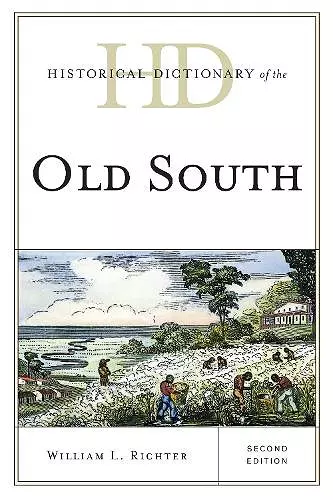Historical Dictionary of the Old South
Format:Hardback
Publisher:Scarecrow Press
Published:28th Feb '13
Currently unavailable, and unfortunately no date known when it will be back

The South played a prominent role in early American history, and its position was certainly strong and proud except for the “peculiar institution” of slavery. Thus, it drew away from the rest of an expanding nation, and in 1861 declared secession and developed a Confederacy… that ultimately lost the war. Indeed, for some time it was occupied. Thus, the South has a very mixed legacy, with good and bad aspects, and sometimes the two of them mixed. Which only enhances the need for a careful and balanced approach.
This can be found in the Historical Dictionary of the Old South, which first traces its history from colonial times to the end of the Civil War in a substantial chronology. Particularly interesting is the introduction, which analyzes the rise and the fall, the good and the bad, as well as the middling and indifferent, over nigh on two centuries. The details are filled in very amply in over 600 dictionary entries on the politics, economy, society and culture of the Old South. An ample bibliography directs students and researchers toward other sources of information.
In this volume, the second edition of the title, “Old South” refers to presecession South (1790–1861). Richter, who is referred to in the foreword as an “academically trained historian” retired from “his own horseshoeing business,” has written other volumes on the topic, including the first edition of this title. The volume offers a chronology, an introduction (which serves as a historical overview and an explanation of the author’s standpoint), 600 brief alphabetically arranged entries, and a bibliography. Coverage includes a range of topics including people, economics, politics, law, society, and culture. Standout features include the introduction, which is truly a helpful historical overview of the Old South and in and of itself an excellent reference article. Greenwood’s 2000 title Encyclopedia of the Antebellum South may suffice in libraries where this topic gets little traffic, but it does not cover as broad a time frame and focuses more specifically on social history. Verdict Recommended for larger collections and where there is a need, especially in libraries that lack the first edition. Likely a must for southern institutions. * Library Journal *
Scarecrow Press are onto a good thing. American history provides an endless series of topics and sub-topics around which you can construct onevolume Historical Dictionaries so they will never run out of raw material. The Old South is a prime example of this because if ever a region had a separate identity, the South was it. Its climate of sultry humidity, its slave-based social system, its values of 'honour' and gentility and its cotton and rice economy all marked it off from the rest of the USA. ... The book strikes a good balance between biographical entries and the rest: wars, laws, crises and revolts, political groupings, economic activity, social institutions, judicial decisions and Indian tribes. * Reference Reviews *
The Historical Dictionaries series by Scarecrow Press are universally excellent sources and this 2d edition is no exception. William L. Richter, professional historian and retired Arizona cowboy, starts with a definition of the Old South. To him it is geographical, chronological, and cultural—a particular section of the United States from the end of the American Revolutionary War through the Civil War that developed a unique culture largely defined by the institution of slavery. In the rest of a most useful introduction, the author outlines the various political, social, cultural, and economic questions that constitute the heart of the historiography of this region. The alphabetically arranged dictionary is extensive, cross-listed, and well written; many entries have touches of humor. The chronology is valuable and the lengthy bibliographic essay that precedes an exhaustive topical listed bibliography is the single best feature of the volume. Appropriate appendixes include U.S. governments during the Antebellum Era, 1790-1861; U.S. and Confederate Governments during the Civil War, 1861-1865; the Articles of Confederation and Perpetual Union, 1781; and the Constitutions of the U.S. in 1860 and the Confederate States of American, 1861. In sum, this volume . . . is a good addition to most university libraries. * American Reference Books Annual *
ISBN: 9780810879140
Dimensions: 235mm x 164mm x 48mm
Weight: 1007g
592 pages
2nd edition